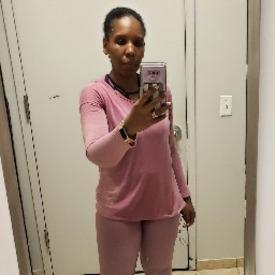Exercise and auto-immune diseases
Options

janaepp
Posts: 1 Member
I always have pain. I always have fatigue. Any others with the same? Tips? Thanks.
7
Replies
-
It depends on your specific case. Your medical team should make suggestions and possibly even refer you for physical therapy.
With clearance from your medical team, start slow and gentle. Walk an extra 10 minutes. Try water exercises. Gentle yoga.5 -
-
I always have pain. I always have fatigue. Any others with the same? Tips? Thanks.
Hi janaepp! I was recently diagnosed with fibromyalgia and know the struggle of pain/fatigue taking over your days. I agree with concordancia - it's all about starting slow. For me, it started with pushing myself just to get out of bed or off of the couch. Then grew to taking back some chores around the house. My doctors have suggested that I start a walking regimen and go from there.4 -
I have fibro and two forms of arthritis and started where you're at now.
The key was starting very slow, and progressing very incrementally. This was, of course, after talking my doctor, and she recommended exercise for battling both the pain and fatigue. She was right!
Just keep it slow so as to not over-tax yourself. I started out walking to the corner and timed that. Once that was easy, I added five minutes to my walk. Once that was easy, I added another 5. That built and built and eventually I was doing things like working on speed intervals (walking faster) between telephone poles.
I can't stress enough to just take it slow, and to gradually increase your activity, but to definitely get moving. Exercise will help so much with both pain and fatigue once you get your body used to doing it.
Good luck.8 -
I have fibromyalgia, rheumatoid arthritis and endometriosis and found physical activity to be extremely taxing and hard to recover from until I got my disease symptoms more under control.
Working out with gentle strength training would leave me feeling flared up and in pain for usually more than a week and just wasn’t worth it to me.
Once I had my endometriosis excision surgery and a hysterectomy, my levels of systemic inflammation significantly decreased which led to better control over my fibromyalgia symptoms and arthritis symptoms and now I am able to be physically active without the negative consequences.
I also changed my diet significantly to eat more whole, nutritious foods and less processed foods which I think has significantly helped with symptom management. I notice now if I eat a lot of processed or unhealthy foods I feel significantly worse and it’s harder for me to exercise.
Talk to your doctor about better symptom management and what you can do to reduce your inflammation levels.5 -
Yeah, two autoimmune diseases here along with si joint and facet joint problems. I'd love advice as well, pain is what got me to this weight and this level of unhealthy. You're not alone!1
-
lleberman8224 wrote: »Yeah, two autoimmune diseases here along with si joint and facet joint problems. I'd love advice as well, pain is what got me to this weight and this level of unhealthy. You're not alone!
Your specific SI joint and facet joint issues likely need some intervention with a physical therapist before starting any exercise program, even a gentle, graded one.0 -
I have ankylosing spondylitis (spine fusing together) it's not a sever but it also affects heels, thumbs and elbow ligaments. Also two bulging discs. The only time I'm not in pain is when I swim. Whether flat out or gentle, I don't feel pain. I also lift weights and cycle, both hurt a bit at the time, but better for keeping on moving. The worst thing for me is sleeping. Staying still isn't good.
I'd advise exercising as much as possible.... But gently to begin with AND after speaking with your doctor. Swimming, walking, weights - all have benefits and if done properly shouldn't cause issues.0 -
Just go easy and perhaps try walking? I have inflammatory/autoimmune back pain along with my eye disease. Walking has helped tremendously! (That and diclofenac. Freaking MIRACLE drug)0
-
I have fibro and exercise helps immensely. I started slow, built up time and intensity, and followed doctors guidelines- stretch, light to moderate weight training, cardio.
I listen to my body as well. When it feels tired or my mind says "I just don't want to " I take a rest day and just work on getting my steps in, or do something low intensity.0 -
I have several autoimmune disorders
Been getting worse and worse over the last few years getting back to pretty immobile again
I begged to see physio (I'm UK based) who after a couple sessions and realising how weak I am sent me to podiatry. Specialist insoles were made as I apparently roll inwards wayyyyy to far which they think is a big contributor to my joint damage (not the whole picture though as the damage to elbows and hands can't be due to my feet)
The podiatrist has then referred me on to a specialist to look at why my ligaments are so tight
With everyone working together for me and telling me to go slow and steady with exercise I'm starting to improve In stamina and Pain levels
2
This discussion has been closed.
Categories
- All Categories
- 1.4M Health, Wellness and Goals
- 396.8K Introduce Yourself
- 44.2K Getting Started
- 260.9K Health and Weight Loss
- 176.3K Food and Nutrition
- 47.6K Recipes
- 232.8K Fitness and Exercise
- 452 Sleep, Mindfulness and Overall Wellness
- 6.5K Goal: Maintaining Weight
- 8.7K Goal: Gaining Weight and Body Building
- 153.3K Motivation and Support
- 8.3K Challenges
- 1.3K Debate Club
- 96.5K Chit-Chat
- 2.6K Fun and Games
- 4.5K MyFitnessPal Information
- 16 News and Announcements
- 18 MyFitnessPal Academy
- 1.4K Feature Suggestions and Ideas
- 3.1K MyFitnessPal Tech Support Questions









